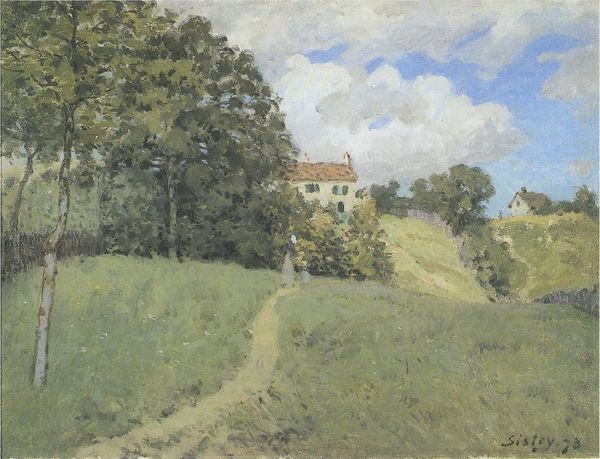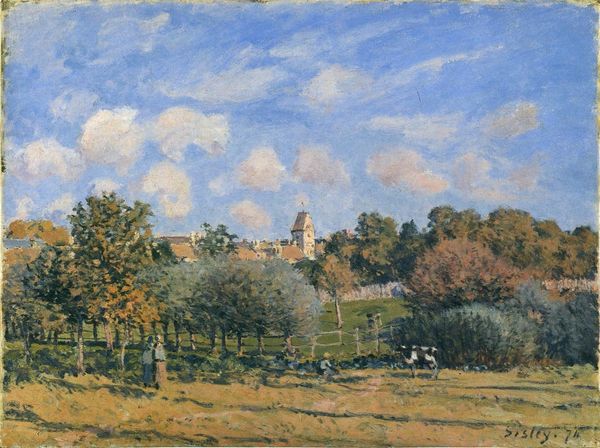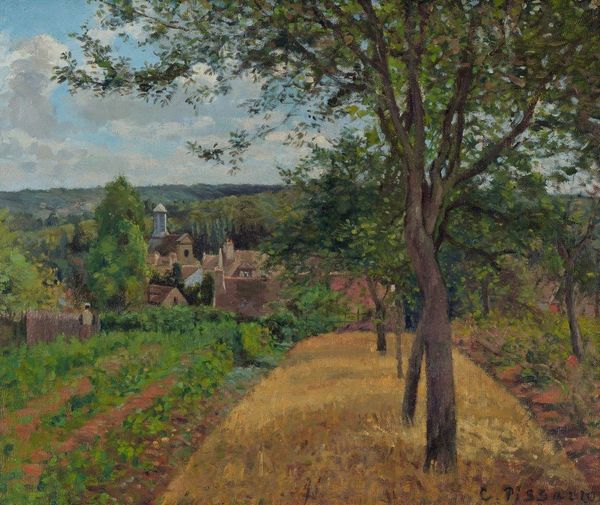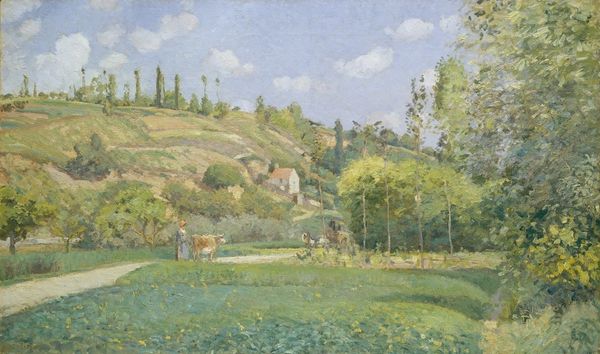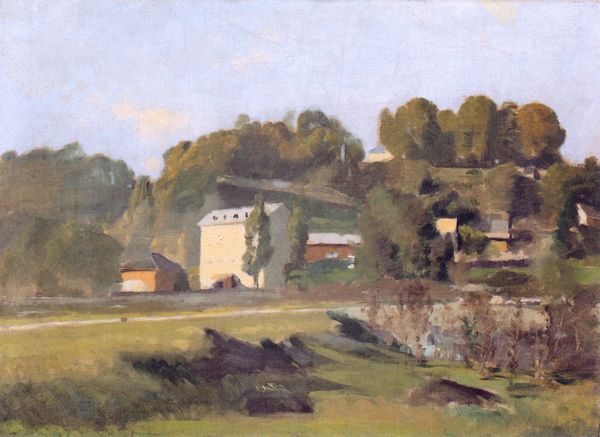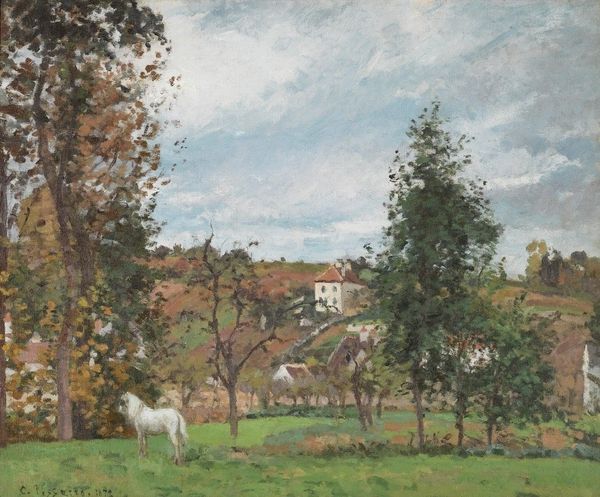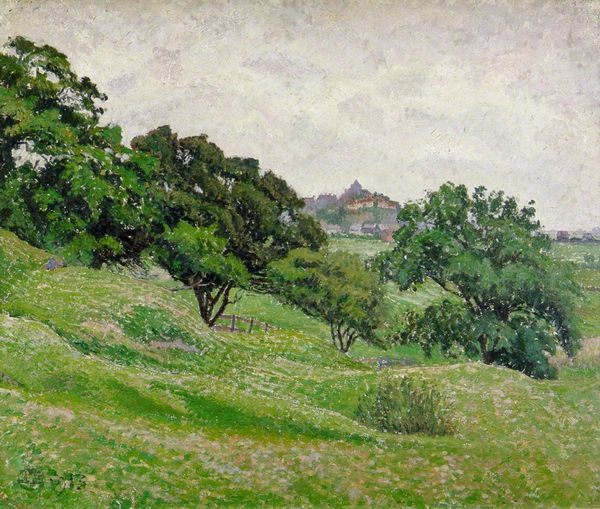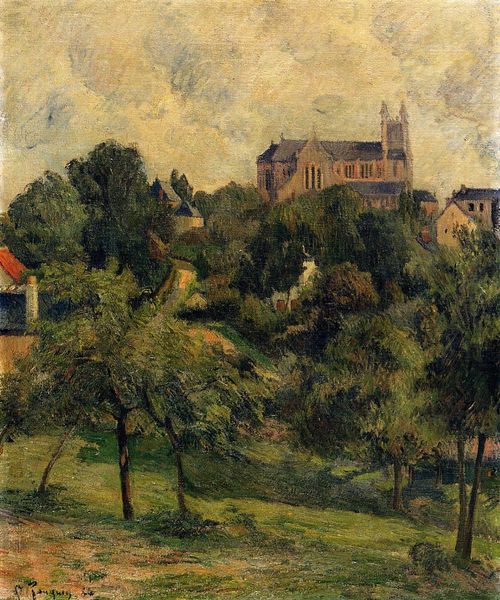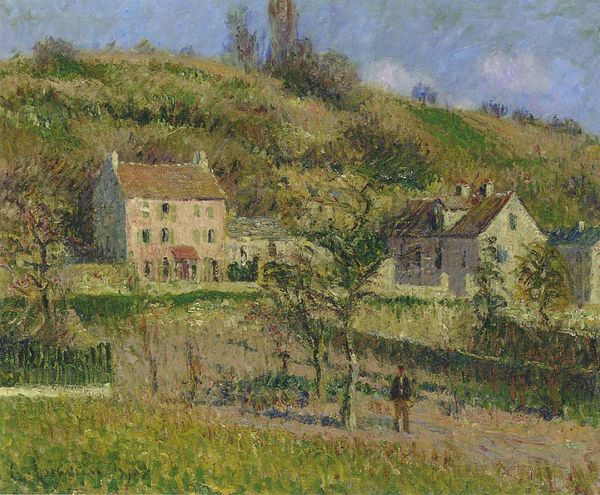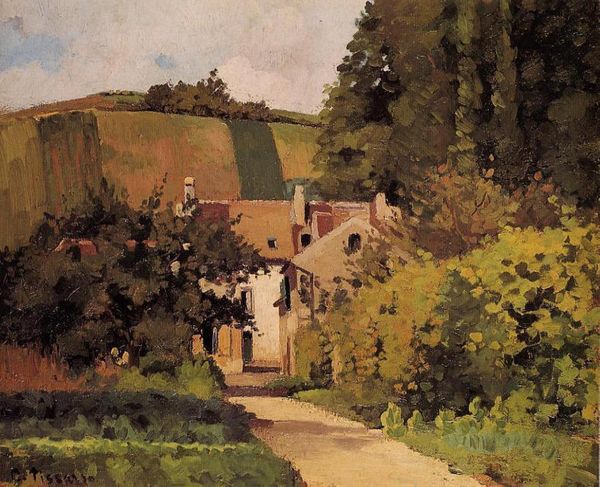
plein-air, oil-paint
#
impressionism
#
plein-air
#
oil-paint
#
landscape
#
oil painting
Copyright: Public Domain: Artvee
Editor: So, we’re looking at Anton Romako’s "Die Meiereiwiese in der Vorderbrühl mit der Ruine Mödling," created in 1885 using oil paint. I find it has this sort of dreamlike quality, with soft brushstrokes and muted colors. It definitely leans into plein-air techniques. How do you interpret its visual impact? Curator: Well, focusing on formal elements, the painting demonstrates an intriguing tension between structured composition and spontaneous execution. Notice how Romako juxtaposes the horizontal expanse of the meadow with the verticality of the trees and the ruin on the hill. Consider, too, the contrast between the blurred foreground and the more defined structures in the background. Is this imprecision purposeful, perhaps symbolizing the passage of time? Editor: That’s interesting. I hadn’t thought about the tension like that. It seemed almost haphazard at first, but there is definitely intention. Does the contrast lead to a semiotic perspective or a potential breakdown of any structure? Curator: Exactly, the fragmented quality—in essence the ‘ruin’ aspect within its materiality and structure—can evoke a sense of incompleteness, reflecting the inherent limitations of representation itself. Furthermore, we observe Romako’s manipulation of color. Notice how the predominantly muted tones create a unified, almost melancholic mood. How does the interplay between these tonal shifts—dark versus light, muted versus bold—guide your reading of this work? Editor: I see now that even with the lighter greens in the center, it gives that central expanse an illusory feel as part of the atmospheric conditions that define this period and place. Thank you. I feel like I'm grasping more of this picture now! Curator: And I think framing this work in terms of opposing design elements helps bring its complexities to light.
Comments
No comments
Be the first to comment and join the conversation on the ultimate creative platform.
